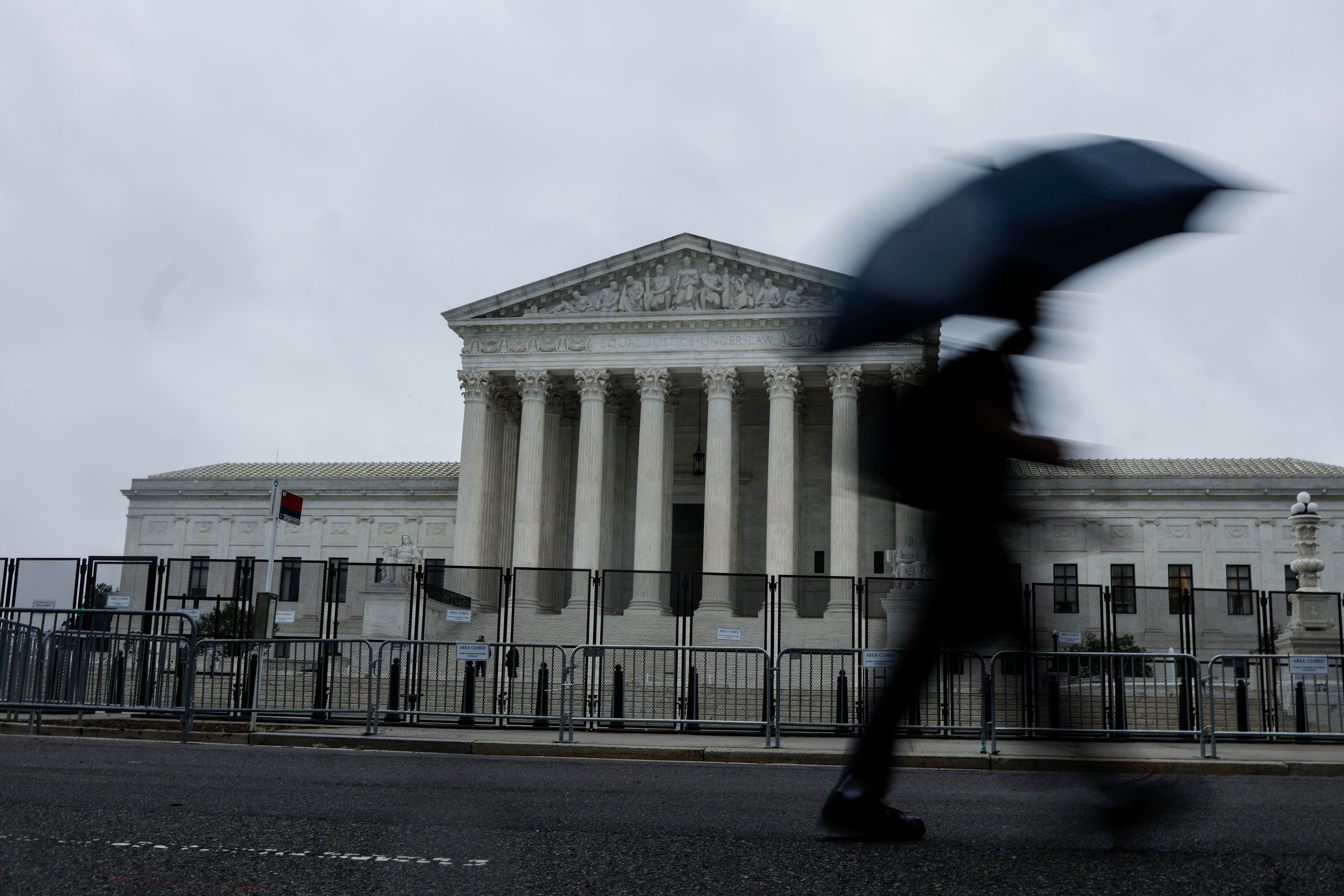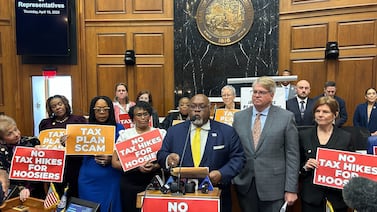New restrictions on abortion could increase child poverty and hurt women’s educational prospects, among other potential impacts on American schools.
The Supreme Court’s decision to overturn Roe v. Wade on Friday hands abortion rights to the states, 26 of which already have or are very likely to enact laws that will ban or sharply curtail the practice.
As a result, experts predict at least some increase in teen births, higher rates of childhood poverty, and decreased female participation in the workforce — though the magnitude of those changes are difficult to predict.
“It is so clear that we have an evidence base that women’s mental health, women’s economic prospects, women’s educational prospects are going to be damaged by lack of access to abortion,” said Sarah Cohodes, an associate professor of economics and education at Columbia University. “If it follows past patterns, and there’s no reason why that won’t, it will be focused on young people and Black pregnant people.”
Child poverty
Economists have shown that abortion access affects a pregnant person’s decision whether and when to have a child, with a variety of effects on their lives and their families.
“Short term, what you’re going to see is a rise in child poverty,” Barnard College Professor of Women and Economics Elizabeth Ananat said. “Women use the access to abortion as one of the tools for family planning and for timing births so that they come at a time when the parent is best able to support a family.”
A study conducted at the University of California, San Francisco, known as “The Turnaway Study,” showed people who were denied an abortion and went on to give birth experienced an increase in household poverty lasting at least four years relative to those who received an abortion.
In concrete terms, that means those women struggled to cover basic living expenses like food, housing, and transportation. They also experienced blows to their financial security, like lower credit scores, increased debt, and a higher likelihood of bankruptcy and eviction.
The children they already had were more likely to experience developmental delays, lower test scores, and behavioral issues.
“That is directly attributable to the stress and strain on their mother and on their family, from being forced to carry this unwanted pregnancy to term,” Ananat said.
Poverty affects children’s performance in school, and there are “decades of social science research” to prove it, Cohodes said. Research has directly linked anti-poverty programs to better academic outcomes, including test scores and graduation rates.
Teen births and graduation rates
Teen pregnancy rates in the U.S. have been dropping for decades, and federal statistics show they hit another low in 2020.
Abortion rates among teens have fallen dramatically over the same period, though they increased between 2017 and 2020. They also vary widely across states, and teens who do get pregnant already face a variety of restrictions on abortion access in many parts of the country. In many (but not all) states where abortion access will be newly limited, teen abortion rates were already low.
That means drastic changes are unlikely. But the new restrictions are likely to have some effect on teen birth rates, Ananat said.
“If the abortion rate goes down [further], as it is predicted to when this happens, then what that will do is lead to more women forced to carry to term who don’t want to, it may well mean more teens,” she said. “Those are all going to be pressures on schools.”
Teens who have children face new obstacles to continuing their education.
Just over half of young women who gave birth as teens received a high school diploma, according to a 2018 study by Child Trends, a nonpartisan research institute. That’s in comparison to 90% of those who did not. Exactly how much of that gap is caused by having a child, as opposed to other factors, has been debated by researchers, but experts generally agree teen parenthood has an impact.
For young women who want to pursue higher education, graduating high school on time (if at all) is a “huge milestone,“ said Cohodes.
“It’s very hard to see that happening for young women who have an infant in a society that doesn’t have a lot of support for people with infants that don’t have resources on their own.”
Kevin Lang, a Boston University economics professor, found in a 2015 study he co-authored that unwed pregnant teens who gave birth between 1940 and 1968 — pre-Roe — were 16% more likely to drop out of high school compared to those who miscarried.
Today, contraception is more advanced, graduation rates are higher, and abortion will still be accessible to some at varying degrees, Lang said, but the research helps anticipate a general trend.
Another challenge: Schools may lack the support teen parents need to reach graduation, especially given the closure of programs designed for them in recent years.
“There are pregnant and parenting students now and we don’t see overwhelming support and programming options for those students in the current system,’’ Cohodes said.
The education workforce
New restrictions on abortion are also likely to have some affect on the teaching force, roughly three-quarters of which is female, if educators leave the workforce as a result of pregnancy or lack of child care.
Broadly, experts expect abortion bans or limitations to have the heaviest impact on young women, low-income women, and women of color. U.S. teachers are college educated and mostly white.
“This is not going to be a big aggregate impact,” Lang said. “What there will be are specific cases where both the teacher who was not planning to get pregnant is affected by this, and of course, the classroom where she was planning to spend the year.”
Ananat said that although the number of teachers in affected states forced to leave the workforce will likely be modest, when they do leave it will likely be sporadic and unpredictable. She expects that will only be an added strain on districts already struggling to staff buildings during the pandemic era.
“Given the teacher shortage that many places are reporting right now, even small increases in teacher attrition — especially sort of unpredictable teacher attrition — can be something that is really felt by a system,” she said. “This could be sort of like the straw that breaks the camel’s back in some situations.”
Supreme Court decisions moving forward
After the draft opinion overturning Roe was leaked last month, some conservative and right-wing voices have suggested the decision could influence the Supreme Court to revisit other landmark civil rights cases like Brown v. Board of Education, which banned the practice of “separate but equal” schooling, and Plyer v. Doe, which protects the rights of undocumented children to an education.
Texas Gov. Greg Abbott said he hopes to “resurrect” Plyler during a recent appearance on a conservative talk show.
There’s currently no reason to think that either case is at imminent risk. Brown v. Board, unlike Roe, is “super precedent,” Justice Amy Coney Barrett said during her confirmation hearings. While Plyler doesn’t have that level of consensus, it also hasn’t been a longstanding conservative target.
“I hope it’s just much ado about nothing,” Derek Black, an education law professor at the University of South Carolina, told Chalkbeat in May. “But we’ve certainly seen polarization on issues, so I obviously don’t rule out the possibility.”
Jessica Blake is a summer reporting intern for the Chalkbeat national desk. Contact her at jblake@chalkbeat.org or on Twitter at @JessicaEBlake.





